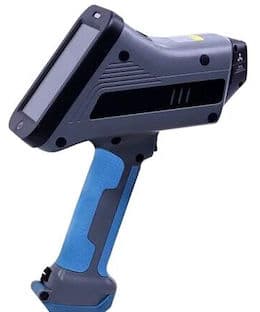
-----
Sorting Alloy 42 from Invar 36
January 12, 2011
We have several hundred small rings which we machined, which may have been made of the wrong material. There are two rings:
-Ring A is about .750 inches in diameter, less than .020 inches thick, and .175 in height. That ring should be made out of 41% nickel, Alloy 42. Most of the surface was abrasive blasted, but a small edge is not.
-Ring B is about .875 inches in diameter, less than .014 inches thick, and .100 in height. That ring should be made out of Invar 36. A small edge was abrasive blasted, but most of it is not.
the problem is that some pieces of Ring A may have been made out the material for Ring B (Invar 36). Some pieces of Ring B may have been made out of the material for Ring A (41% nickel, Alloy 42). If we can not sort them, then we probably have to scrap them.
Is there any way to figure out which is which? I keep wondering if there is a chemical we can immerse them in that might react to one metal, but not the other? That is just where my brain is going you can think of something completely different then I will happily use it.
If a test would be destructive to both, then it is probably useless to us; but, if it is destructive to one metal but not the other, then that might be acceptable.
Things which have occurred to me, but don't seem to do us any good:
-Magnets: They are both magnetic
-Visual: No one (at least no one who works here) can tell the difference between them visually)
-Weight: Each of the rings weighs about .002 pounds, so I would need an incredibly accurate scale to identify a very small difference. I don't even know if scales like that exist.
Machine Shop Quality Department - Long Beach, California, USA
Hi, James.
X-ray fluorescence will non-destructively identify the material, but the machines are expensive. If you have a large and reputable scrap yard near you, they may have a hand held alloy sorter / scrap sorter
⇦ on
eBay
or
Amazon [affil link] (portable x-ray fluorescence machine) and you may be able to get them to determine this for you. Good luck.
Regards,

Ted Mooney, P.E.
Striving to live Aloha
finishing.com - Pine Beach, New Jersey
Ted is available for instant help
or longer-term assistance.
Q, A, or Comment on THIS thread -or- Start a NEW Thread
